The layout of your bathroom can have a significant impact on its functionality and efficiency. Whether you’re designing a new bathroom or renovating an existing one, it’s important to consider the layout and optimise it for your needs. Here are some tips for designing for function and making the most of your bathroom layout.
Consider Your Needs
When embarking on a bathroom renovation, it’s crucial to tailor the layout to your unique needs and lifestyle. A well-designed bathroom should cater not only to the home’s overall aesthetic but also to the specific requirements of those who use it. Start by assessing who will be using the bathroom: is it a personal ensuite, a family bathroom, or a space for guests? The number of users will significantly influence the need for double vanities, ample storage, or even multiple shower heads.
Next, consider your daily routine and how your bathroom can streamline and enhance these activities. If mornings are rushed, perhaps a double sink setup can prevent bottlenecks. For those who value relaxation, a spacious tub or a spa-like shower might be a priority. List out all activities from getting ready in the morning to unwinding at night and identify which features will support these the best.
Understanding Special Requirements:
- Accessibility Needs: If any household members have mobility issues or if you’re planning to age in place, incorporating accessibility features such as grab bars, a walk-in shower, or a comfort-height toilet can be vital.
- Children’s Needs: Families with young children might prioritise bathtubs, non-slip surfaces, and durable, easy-to-clean materials.
Maximising Space and Efficiency:
- Efficient Storage: Assess what items you need to store in the bathroom and plan accordingly. Think vertically with wall-mounted cabinets or creatively with under-sink organisers to make the most of your space.
- Smart Layout: Even in smaller bathrooms, smart layout choices can make a big difference. Consider pocket doors to save space or a wet room design to combine the shower and bath area efficiently.
Incorporating Technology and Luxury:
- Tech Features: Modern bathrooms can include technological features such as digital showers, built-in speakers, or smart mirrors that contribute to functionality and luxury.
- Relaxation Elements: Features like a deep soaking tub, heated flooring, or a customised vanity area can transform your bathroom into a personal retreat.
Consulting with Professionals:
- Designers and Architects: These experts can offer innovative solutions and insights into the latest trends and technologies that you might not have considered.
- Contractors: A skilled contractor can provide practical advice on the feasibility of different layout options and help identify potential issues early in the design process.
Considering your specific needs and preferences is a critical step in designing a functional and satisfying bathroom layout. By carefully assessing who will use the bathroom, what activities it needs to support, and any special requirements, you can create a space that truly enhances daily life. Remember, a successful bathroom design blends aesthetic appeal with personalised functionality, creating an efficient and enjoyable environment for all.
Learn More About 5 Tips for an Age-Friendly Bathroom Remodel
Optimise Your Space
Maximising the available space in your bathroom is crucial for creating a layout that is both functional and aesthetically pleasing. Even the smallest bathrooms can feel spacious and luxurious with the right design strategies. Start by assessing the existing layout and identifying any areas that are underutilised or overcrowded. Consider how you can rearrange, replace, or remove elements to improve the flow and functionality of the space.
 Effective Storage Solutions:
Effective Storage Solutions:
- Built-in Storage: Incorporating built-in cabinets, shelves, or niches into your bathroom design can significantly increase storage capacity without taking up additional floor space. Consider recessed medicine cabinets, shelving in shower areas, or built-in vanity units.
- Utilising Vertical Space: Often overlooked, vertical space can be a goldmine for extra storage. Install floating shelves, tall cabinets, or hooks to keep essentials within reach without cluttering the floor or counter areas.
Choosing Appropriate Fixtures:
- Compact Fixtures: Select fixtures that are proportionate to the size of your bathroom. Wall-mounted toilets, corner sinks, or streamlined vanities can free up valuable floor space, making the room feel larger.
- Multifunctional Elements: Consider fixtures that serve multiple purposes, such as a shower-bath combo or a vanity with integrated storage, to maximise functionality in limited space.
Strategic Use of Materials and Colours:
- Reflective Surfaces: Using materials like glass, glossy tiles, or mirrors can help bounce light around the room, creating the illusion of more space.
- Consistent Colour Scheme: A unified colour scheme, especially in lighter shades, can make a bathroom feel more open and cohesive. Consider using the same tiles on the floor and walls to enhance this effect.
Innovative Design Techniques:
- Door Alternatives: If space allows, consider alternatives to traditional swinging doors, such as pocket doors or sliding barn doors, to save space.
- Custom Layouts: Tailoring the layout to fit the unique dimensions and shape of your bathroom can optimise every inch. Work with a designer or architect to find creative ways to arrange fixtures and features.
Consulting with Professionals:
- Space Planning Experts: Interior designers, architects, or specialised bathroom designers can offer valuable insights into making the most of your space. They can suggest layout adjustments, smart storage solutions, and compact fixtures that you might not have considered.
- Contractors and Builders: Ensure that any structural changes or installations are feasible and comply with building regulations. Experienced contractors can provide practical advice on maximising space during the construction or renovation process.
Optimising your bathroom space requires a thoughtful approach to layout, storage, fixtures, and design elements. By making strategic choices and utilising every inch effectively, you can create a bathroom that feels spacious, organised, and tailored to your needs. Remember, a well-planned bathroom not only looks better but also enhances the daily experience of using the space, making it a worthwhile investment in comfort and functionality.
Discover More About The Pros and Cons of Trendy vs. Timeless Bathroom Designs
Prioritise Privacy
Privacy is a critical aspect of bathroom design, particularly in shared or family homes. The right layout and features can provide comfort and discretion for all users, turning the bathroom into a sanctuary for relaxation and personal care. When planning your bathroom renovation, consider the different ways privacy can be enhanced without sacrificing style or functionality. It’s about creating private spaces within the bathroom that cater to the needs of each individual while maintaining the overall flow and utility of the room.
Creating Separate Zones:
- Separate Toilet Area: Installing a partition or a separate room for the toilet can significantly increase privacy. This can be a full or half wall, a frosted glass panel, or even a discreetly placed screen. A separate toilet area allows one person to use the toilet while another uses the sink or shower, making the bathroom more functional for shared use.
- Shower and Bathtub Partitions: Consider using curtains, glass enclosures, or even a dedicated wet room to segregate the shower or bathtub area. This not only provides privacy for bathing but also helps contain water and steam, keeping the rest of the bathroom more comfortable and dry.
Enhancing Privacy with Design Elements:
- Frosted or Textured Glass: Using frosted, textured, or tinted glass for windows and shower enclosures can allow natural light to enter while ensuring privacy. This is especially important for bathrooms facing outdoor spaces or neighbouring properties.
- Strategic Placement of Fixtures: Arrange fixtures so that the more private elements, like the toilet or shower, are less visible from the bathroom door. Consider the sightlines from outside the bathroom and from common areas within the bathroom itself.
Innovative Solutions for Small Spaces:
- Pocket Doors: Installing pocket doors or sliding panels can provide privacy when needed without taking up the space required for a swinging door.
- Smart Use of Mirrors and Reflections: Properly placed mirrors can create a sense of openness and help obscure direct views into private areas, offering a clever way to enhance privacy.
Consulting with Professionals:
- Interior Designers and Architects: These experts can help you plan a layout that maximises privacy while maintaining an efficient and aesthetically pleasing design. They can suggest innovative solutions and materials that you might not have considered.
- Contractors: Discuss your privacy needs with your contractor to ensure that any partitions, doors, or special installations are implemented effectively and comply with building codes.
Prioritising privacy in your bathroom design is about understanding the needs and comfort levels of all users. By incorporating thoughtful partitions, clever layout strategies, and appropriate materials, you can create a space that offers personal retreats within the communal area. A bathroom that balances privacy with functionality and style will be a valuable asset to your home, providing a comfortable and accommodating environment for everyone.
Read More on Designing a Spa-Like Bathroom Retreat on a Budget
Choose Your Fixtures Wisely
Selecting the right fixtures is a crucial aspect of bathroom design that significantly influences both functionality and aesthetics. The choices you make for your toilet, sink, shower, and bathtub should reflect the specific needs of your household while optimising the available space. By considering the size of your bathroom, the frequency of use, and the preferences of all who use it, you can choose fixtures that enhance the daily routine and contribute to a more efficient and enjoyable bathroom experience.
Assessing Your Needs and Space:
- Space Constraints: In smaller bathrooms, consider space-saving fixtures like wall-hung toilets, pedestal sinks, or corner showers. These can help maximise floor space and make the bathroom feel larger.
- User Frequency: For bathrooms with heavy traffic or multiple users, look for durable fixtures that can withstand constant use. This might mean choosing robust materials for sinks and toilets or installing a shower designed for quick and easy cleaning.
Fixture Types and Considerations:
- Toilets: Beyond the standard models, consider features like dual flush options for water efficiency, comfort height designs for accessibility, or even bidets for enhanced hygiene.
- Sinks: From vessel sinks that add a decorative touch to under-mount sinks that facilitate easier cleaning, the right choice can significantly affect the usability and look of your bathroom.
- Showers and Bathtubs: Think about who will be using them and how. For a quick and efficient routine, a walk-in shower might be ideal. If relaxation is a priority, a larger tub or a shower with multiple heads and features could be more appropriate.
Innovative and Efficient Fixtures:
- Water-Saving Fixtures: Eco-friendly toilets, faucets, and showerheads can reduce water usage without compromising performance, benefiting both the environment and your utility bills.
- Smart Features: Consider fixtures with advanced features like touchless tapware, temperature memory settings, or built-in lighting for a more comfortable and modern bathroom experience.
Balancing Form and Function:
- Aesthetic Harmony: Ensure that the fixtures you choose complement the overall design theme of your bathroom. Consistency in style, colour, and finish can contribute to a cohesive look.
- Quality and Longevity: Investing in high-quality fixtures from reputable manufacturers can ensure that they last longer, look better, and provide reliable performance over time.
Consulting with Professionals:
- Plumbers and Designers: Expert advice can be invaluable in choosing the right fixtures. Plumbers can provide insights into the technical aspects and installation requirements, while designers can help you navigate the vast array of styles and features available.
- Showroom Visits: Seeing fixtures in person can give you a better sense of their size, quality, and how they might look in your space. Take the opportunity to test handles, open drawers, and really get a feel for the products before making a decision.
Choosing your bathroom fixtures wisely involves a careful evaluation of your space, needs, and personal preferences. By selecting the right combination of toilets, sinks, showers, and bathtubs, you can create a bathroom that not only looks great but also functions seamlessly in your daily life. Remember, the best fixtures are those that meet your specific requirements, complement your bathroom’s design, and provide lasting quality and comfort.
Find Out About The Benefits of an Open-Concept Bathroom Design
Create Zones
Creating distinct zones within your bathroom is an effective way to enhance its functionality and organization. By dividing the space into dedicated areas for bathing, grooming, and privacy, you can streamline your daily routine and accommodate the simultaneous use of the bathroom by multiple people. This approach to design helps to maintain a sense of order and calm, even in the busiest of households. As you plan your bathroom renovation, think about how to best separate and define these areas to suit your lifestyle and needs.
Types of Zones and Their Functions:
- Shower or Bathtub Zone: This area is dedicated to bathing and should be designed for comfort and efficiency. Consider waterproof materials, adequate shelving for bath products, and non-slip flooring. If space allows, a separate tub and shower can create a more luxurious and versatile bathing area.
- Vanity Area: A well-designed vanity zone includes a sink, mirror, and storage for grooming essentials. This area should have good lighting and enough counter space to accommodate daily routines, from brushing teeth to applying makeup.
- Toilet Area: Prioritising privacy in the toilet area is key, especially in shared bathrooms. You might use a partial wall, a privacy screen, or even a separate water closet to seclude the toilet from the rest of the bathroom.
Maximising Efficiency and Comfort:
- Space Planning: Arrange the zones in a logical order that reflects the natural flow of bathroom activities. Ensure there’s enough space to move comfortably between areas and that doors or drawers can open without obstruction.
- Design Cohesion: While each zone will have its specific features, maintaining a cohesive design throughout the bathroom is important. Use consistent materials, colours, and styles to unify the space and avoid a disjointed appearance.
Innovative Zone Ideas:
- Dressing Area: If space permits, a designated area for dressing can add convenience, especially in a primary ensuite. Include seating, a full-length mirror, and storage for clothes and accessories.
- Wet Zone: Combining the shower and bathtub in one tiled area, often with a glass partition, can create a sleek, spa-like wet zone that’s easy to clean and visually expansive.
Consulting with Professionals:
- Interior Designers: Design professionals can offer creative solutions for zoning, especially in challenging or unusual spaces. They understand how to balance aesthetics with functionality and can suggest the latest trends and materials.
- Contractors and Builders: Ensure that your zoning plans are feasible and comply with all building codes and regulations. Experienced contractors can provide valuable insights into construction considerations and potential costs.
Creating zones within your bathroom is a strategic way to enhance its functionality and aesthetic appeal. By thoughtfully designating areas for bathing, grooming, and privacy, you can create a space that accommodates the diverse needs of your household. A well-zoned bathroom not only streamlines your daily routine but also contributes to a more organized and relaxing environment. With careful planning and expert advice, you can transform your bathroom into a beautifully functional space that everyone enjoys.
Small Bathroom, Big Impact: Creative Design Solutions for Limited Space
Utilise Lighting
Lighting is a critical component of bathroom design, influencing not only the functionality of the space but also its atmosphere and mood. A well-lit bathroom can make all the difference in your daily routine, offering clarity for tasks and a soothing environment for relaxation. When planning your bathroom renovation, consider a layered lighting approach that combines various types of lighting to address different needs and create a versatile and inviting space.
 Layering Different Types of Lighting:
Layering Different Types of Lighting:
- Overhead Lighting: This is the primary source of illumination in the bathroom, providing general light to the entire space. Options like recessed lighting, ceiling fixtures, or even a skylight can ensure the room is evenly lit, eliminating dark corners or shadows.
- Task Lighting: Essential for activities like shaving or applying makeup, task lighting should be bright and focused. Vanity lighting, such as sconces placed at eye level on either side of the mirror, can provide shadow-free illumination for the face, making grooming tasks easier and more accurate.
- Accent Lighting: Use accent lighting to highlight architectural features, artwork, or other design elements. This might include directional recessed lights, LED strip lighting under counters, or even decorative wall fixtures. Accent lighting adds depth and dimension to the bathroom, enhancing its visual appeal.
Maximising Functionality and Ambiance:
- Adjustable Intensity: Installing dimmer switches allows you to adjust the light level to suit different times of day and activities, from bright light for morning preparations to softer light for a relaxing bath in the evening.
- Colour Temperature: The colour temperature of light bulbs can affect the look and feel of the bathroom. Warmer lights create a cozy, inviting atmosphere, while cooler lights mimic natural daylight, providing a more accurate representation of colours.
Innovative Lighting Solutions:
- Motion Sensors: For added convenience and energy efficiency, consider motion sensor lights that automatically turn on and off as you enter or leave the bathroom.
- Waterproof Fixtures: In wet areas like showers or tubs, use waterproof lighting fixtures designed for safety and durability in moist environments.
Consulting with Professionals:
- Lighting Designers: A lighting designer can help you create a comprehensive lighting plan that considers the size of the bathroom, the colour scheme, and the specific tasks performed in the space. They can suggest innovative fixtures and layouts to achieve the best results.
- Electricians: Professional installation is crucial for safety and functionality, especially in a wet environment like a bathroom. Discuss your lighting plans with an electrician to ensure that all fixtures are installed correctly and comply with local building codes.
Utilising lighting effectively in your bathroom renovation is essential for creating a space that is both functional and aesthetically pleasing. By incorporating a combination of overhead, task, and accent lighting, you can address various needs and enhance the room’s ambiance. Consider the impact of different lighting types, adjustability, and colour temperature to create an atmosphere that suits your lifestyle and preferences. With the right lighting design, your bathroom can become a more comfortable, inviting, and efficient space.
Dive Into Tips for Maximising Natural Light in Your Bathroom Remodel
Incorporate Storage
Effective storage is essential in maintaining an organised, clutter-free bathroom. Well-planned storage solutions can greatly enhance the functionality and aesthetic appeal of the space, ensuring that everything has its place and is easily accessible. As you design or renovate your bathroom, consider various storage options that cater to your specific needs and fit seamlessly into the layout and design of the room.
 Types of Storage Solutions:
Types of Storage Solutions:
- Built-in Cabinets: Custom or prefabricated built-in cabinets can be tailored to fit your space and storage requirements. They offer a sleek, integrated look and can be designed to match the style and materials of your bathroom.
- Shelves and Nooks: Open shelving and recessed nooks provide easy access to frequently used items and offer an opportunity to display decorative objects. Consider the placement of shelves for convenience and visual balance.
- Drawers and Organisers: Drawers with dividers and pull-out organizers can keep smaller items tidy and prevent the jumble often found in under-sink cabinets. Opt for varying drawer depths to accommodate different types of products.
Maximising Space and Accessibility:
- Vertical Storage: Utilise vertical space with tall cabinets or over-toilet storage units, especially in smaller bathrooms. This can provide additional storage without taking up valuable floor area.
- Corner Units: Corner shelves or cabinets can make use of often wasted space and add extra storage. They can be particularly useful in awkwardly shaped bathrooms or tight spaces.
- Custom Solutions: Consider custom storage solutions tailored to your specific needs, such as a vanity with built-in organisers or a bespoke linen closet. These can maximise efficiency and ensure that the storage fits perfectly with the rest of the bathroom design.
Design Integration:
- Material and Finish: Choose materials and finishes for your storage that complement the overall design of the bathroom. Consistency in style and colour can help create a cohesive look.
- Hidden Storage: For a minimalist and uncluttered look, incorporate hidden storage solutions like recessed medicine cabinets, vanity toe-kick drawers, or mirrored cabinets that double as storage.
Consulting with Professionals:
- Interior Designers: Designers can provide innovative storage ideas and help you plan a layout that maximises storage without compromising the room’s aesthetics. They can suggest smart solutions based on the latest trends and products.
- Carpenters and Contractors: Custom storage solutions require skilled craftsmanship. Discuss your storage needs and ideas with your contractor or a specialised carpenter to ensure that they are feasible, well-crafted, and integrated into the overall bathroom design.
Incorporating storage into your bathroom is about finding a balance between necessity and design. By carefully considering the types of items you need to store and how you use them, you can choose solutions that enhance the functionality and look of the space. Whether it’s through built-in cabinets, shelves, or clever organisers, the right storage will help keep your bathroom tidy, serene, and efficient, making it a more enjoyable space for all.
Uncover Details on How to Choose the Right Color Scheme for Your Bathroom Renovation
Add Visual Interest
Enhancing the visual appeal of your bathroom is crucial not only for creating an enjoyable space but also for boosting the overall value of your home. By incorporating elements of texture, colour, and design, you can transform a purely functional room into a delightful sanctuary. Consider various ways to add visual interest that reflects your personal style and complements the bathroom’s functionality. Thoughtful touches can turn the ordinary into the extraordinary, making every visit to the bathroom a pleasant experience.
Incorporating Texture:
- Natural Materials: Utilising natural materials like stone, wood, or bamboo can introduce an element of warmth and texture. Consider stone tiles for the walls or floor, wooden accents for the vanity or shelving, or bamboo accessories for a touch of organic style.
- Textured Surfaces: Textured wallpapers, relief tiles, or decorative plaster can add depth and dimension to the walls. Choose textures that are subtle for a sophisticated look or more pronounced for a dramatic effect.
Adding Colour:
- Accent Wall: Creating an accent wall with a bold colour or patterned wallpaper can serve as a focal point in the bathroom. It can draw the eye and set the tone for the entire space, whether you opt for a vibrant hue or a dramatic pattern.
- Colourful Accessories: Inject colour through accessories like towels, bath mats, or decorative objects. These elements are easy to change out, allowing you to update the look of your bathroom with the seasons or as your tastes evolve.
Design Elements:
- Artwork and Decor: Hanging artwork or incorporating decorative items can add personality and interest. Choose pieces that withstand the humid bathroom environment and reflect your interests or the room’s colour scheme.
- Architectural Features: Consider adding or highlighting architectural features such as a skylight, interesting window shapes, or decorative moulding. These elements can add character and a sense of craftsmanship to the space.
Balancing Visual Interest with Functionality:
- Cohesive Design: Ensure that the decorative elements you choose harmonise with the overall design and function of the bathroom. Each piece should contribute to a cohesive look that complements the layout and fixtures.
- Practical Considerations: While aesthetics are important, remember to consider the practicality of any decorative additions. Ensure that materials are suitable for wet environments and that any artwork or decor is securely mounted and easy to clean.
Consulting with Professionals:
- Interior Designers: A designer can offer creative ideas and guidance on how to effectively add visual interest without overwhelming the space. They can help you select colors, materials, and accessories that create a harmonious design.
- Contractors and Installers: If your plans involve more significant changes like adding an accent wall or new architectural features, consult with a contractor to understand the implications for your bathroom’s structure and layout.
Adding visual interest to your bathroom is about more than just aesthetics; it’s about creating a space that delights the senses and enhances your daily routine. By thoughtfully incorporating texture, color, and design elements, you can craft a bathroom that is both beautiful and functional. Whether through striking materials, vibrant colours, or artful touches, the right decorative choices will make your bathroom a standout feature of your home.
Optimise Traffic Flow
Creating an efficient traffic flow is essential in any bathroom layout, especially in busy households or smaller spaces. A well-planned layout allows for smooth movement and accessibility, minimizing bottlenecks and enhancing the overall functionality of the room. As you design your bathroom, carefully consider the placement of fixtures, doors, and walking paths to ensure a natural and unobstructed flow. This thoughtful approach not only improves the usability of the bathroom but also contributes to a more relaxed and organised environment.
Understanding Traffic Patterns:
- Fixture Placement: Arrange the toilet, sink, shower, and bathtub in a way that encourages a clear path for movement. Ensure there is enough space around each fixture for comfortable use and consider how the bathroom door opening and closing will affect the space.
- Walkways and Access: Identify the main access points and walkways within the bathroom. These should be free from obstructions, allowing for easy entry, exit, and movement around the space. A minimum of 24 inches is typically recommended for clear pathways, with more space being preferable around primary fixtures.
Designing for Efficiency:
- Door Swing and Entry: Consider the swing of the bathroom door and any cabinet doors or drawers. Ensure they don’t interfere with each other or any fixtures. Pocket doors or sliding doors can be excellent alternatives in tighter spaces.
- Zoning: If space allows, create distinct zones for different activities (e.g., bathing, grooming). This can help direct traffic flow and keep the area organized, especially during peak times.
Avoiding Common Obstacles:
- Protruding Fixtures: Be mindful of any fixtures or features that jut out into walkways, such as towel bars, shelving, or decorative elements. Keep these to a minimum or place them outside of the main traffic routes.
- Clutter and Storage: Ensure adequate storage to keep toiletries, towels, and other items off the floor and countertops. This not only helps with traffic flow but also maintains a cleaner, more inviting space.
Consulting with Professionals:
- Interior Designers and Architects: These experts can provide valuable insights into creating an optimal traffic flow based on the specific dimensions and layout of your bathroom. They can suggest innovative solutions and ideas that you might not have considered.
- Contractors: Before finalising any plans, discuss them with your contractor to ensure that they are practical and feasible. They can advise on any structural considerations or potential issues with your proposed layout.
Optimising traffic flow in your bathroom is about more than just good design; it’s about creating a space that works harmoniously with your daily life. By considering fixture placement, walkways, door swings, and common obstacles, you can design a bathroom layout that is both functional and comfortable. Remember, a bathroom with efficient traffic flow contributes to a smoother, more enjoyable routine for everyone who uses it.
Investigate 10 Steps for Creating a Cohesive Design Plan for Your Bathroom Renovation
Work with a Professional
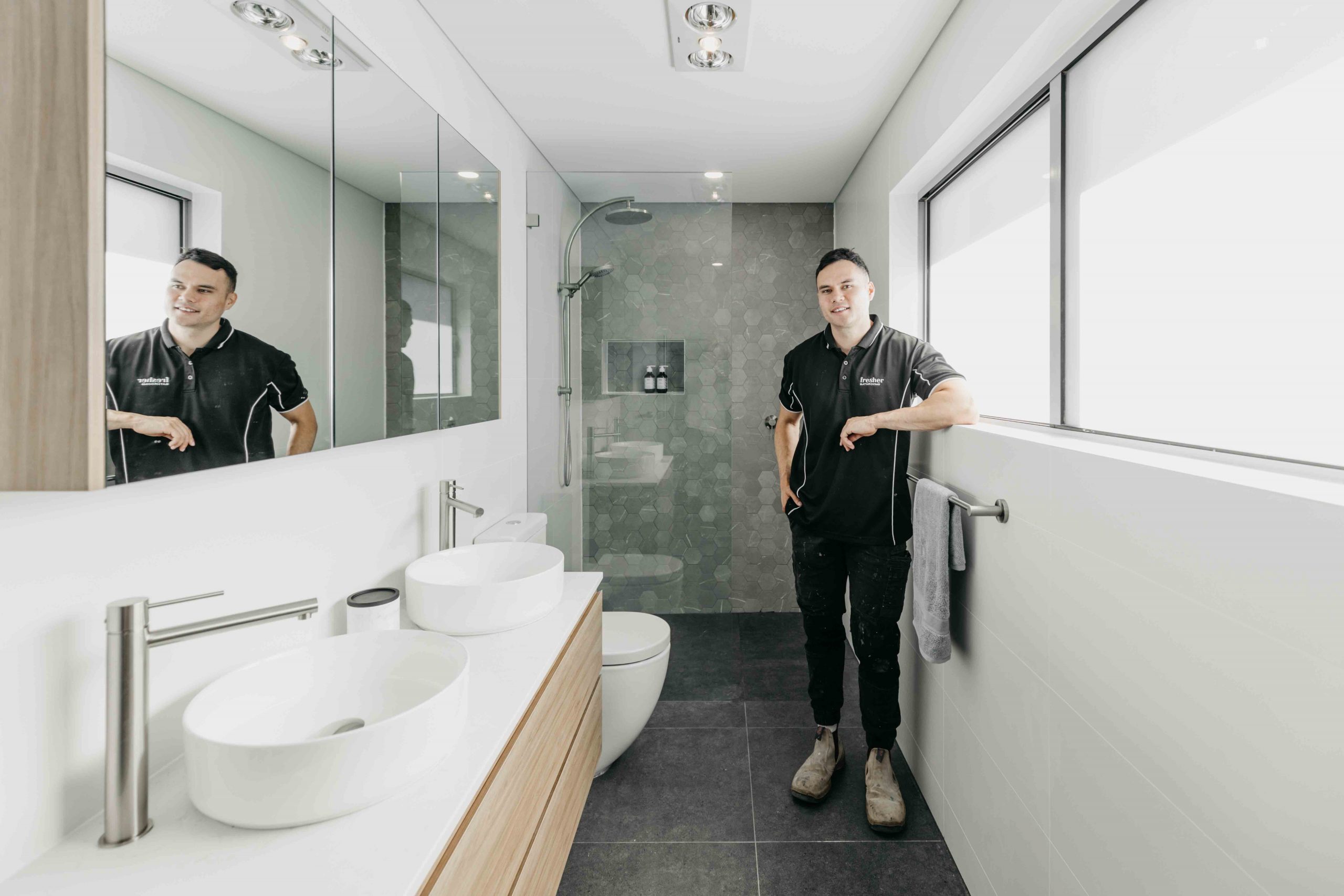
Working with a professional bathroom remodeling contractor or designer can help ensure that your bathroom layout is optimised for your needs and meets your budget. Look for a contractor or designer with experience in bathroom design and renovation, and be sure to communicate your needs and preferences clearly.
By incorporating these tips and strategies, you can design a functional and efficient bathroom layout that meets your needs and reflects your personal style. Remember to prioritise your needs, consider your budget, and work with a professional who has experience designing layouts that optimise space and functionality.
Delve Into Top Bathroom Design Trends to Consider for Your Remodel in 2024

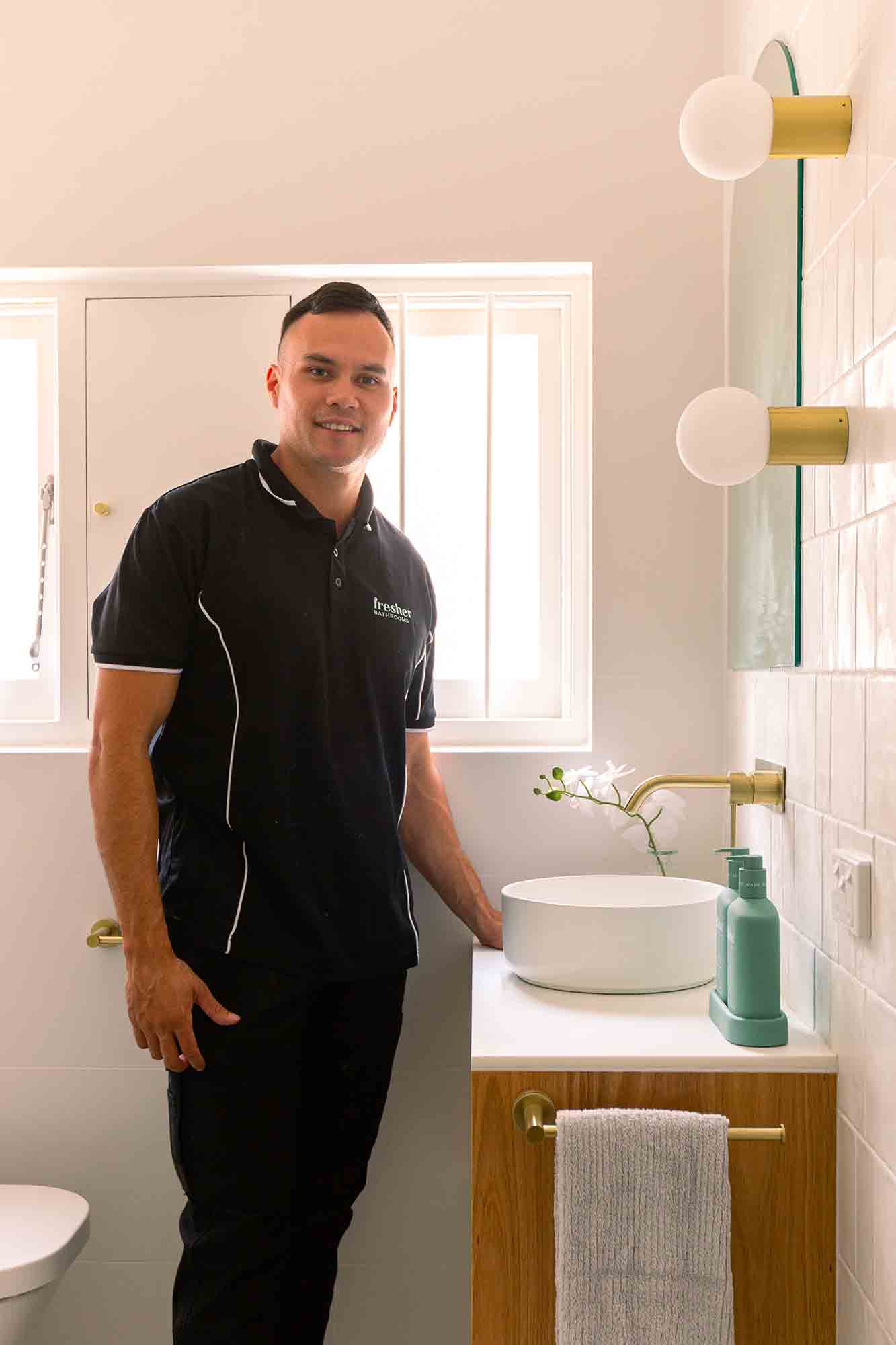
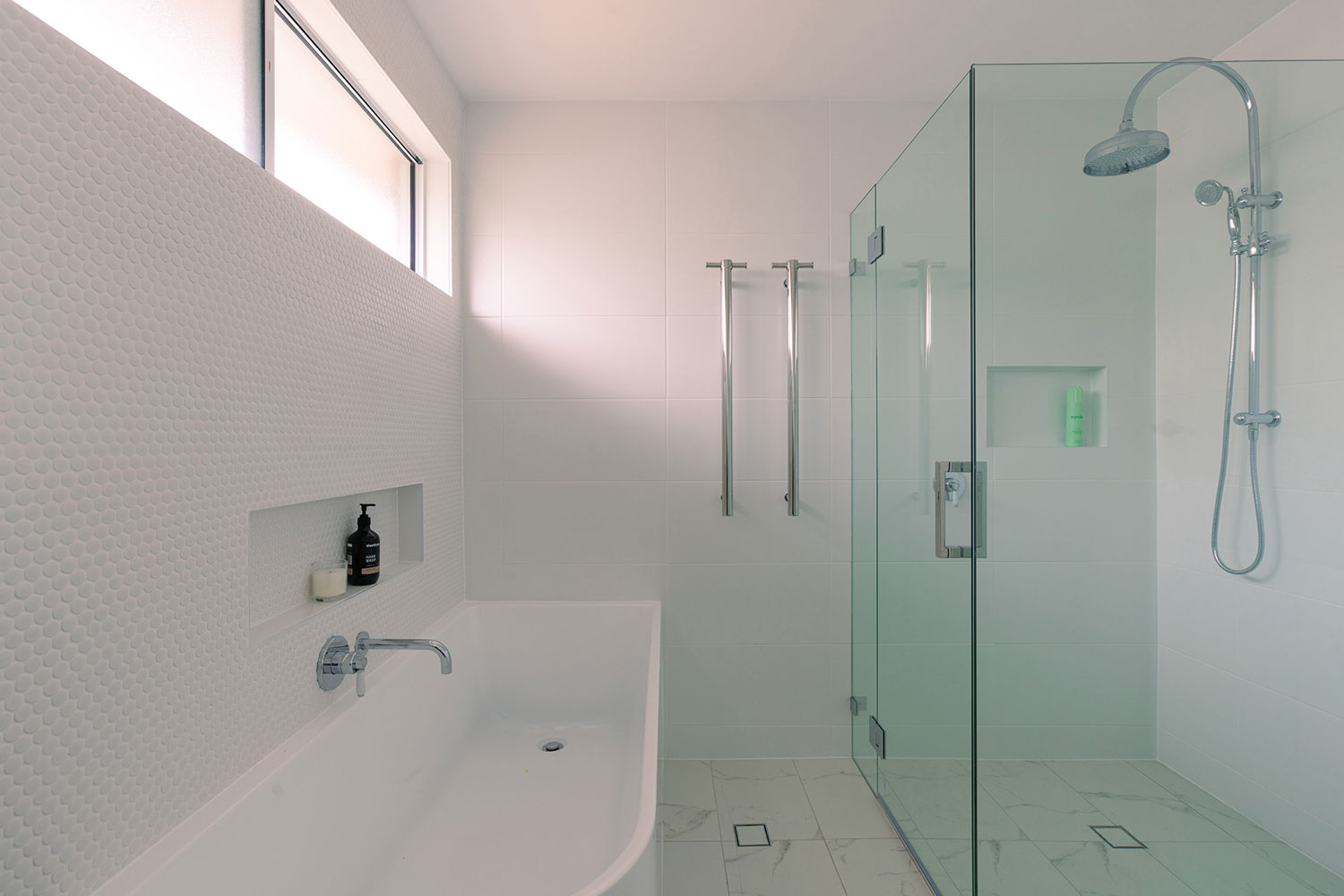 Effective Storage Solutions:
Effective Storage Solutions: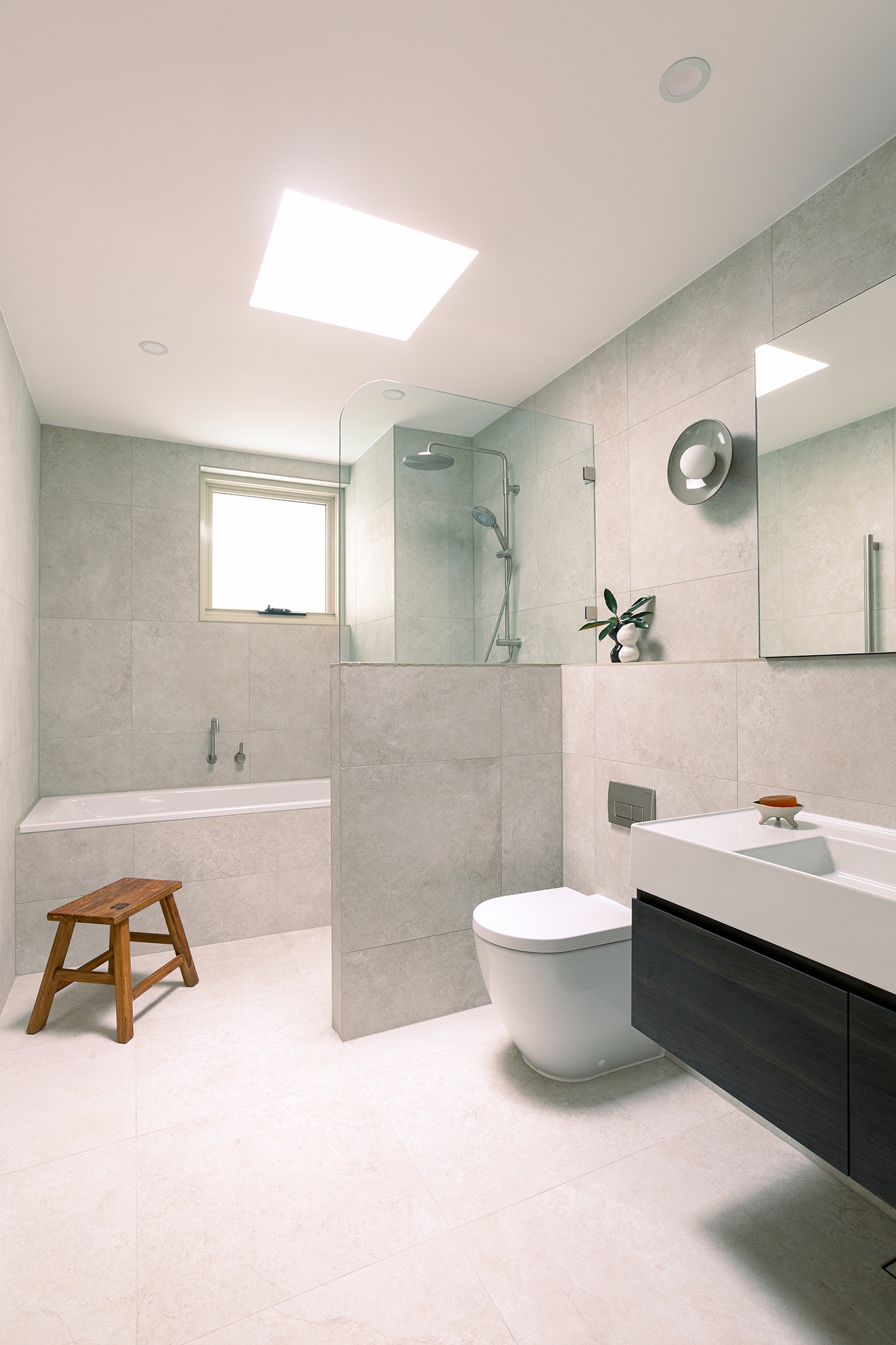
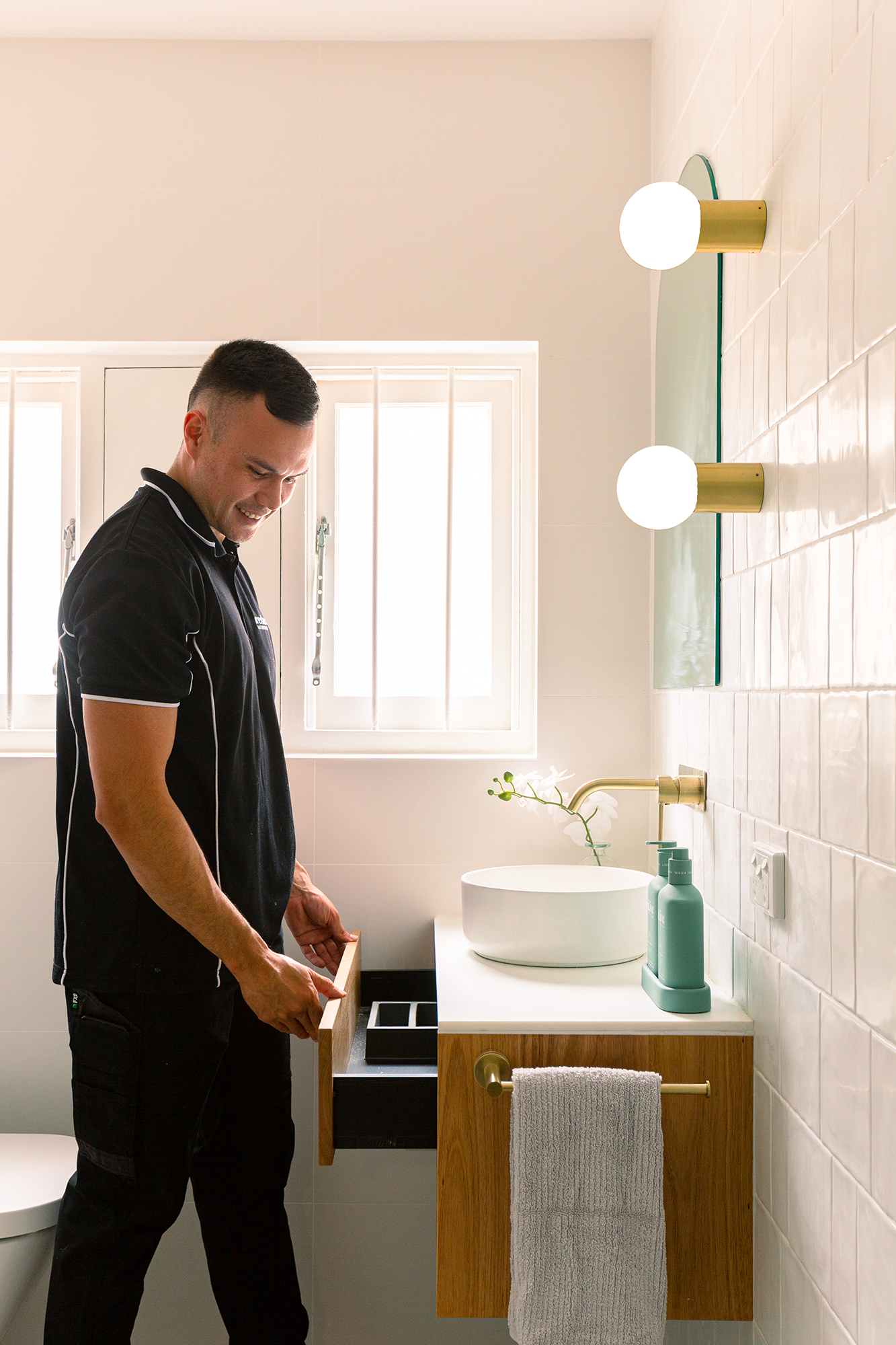 Layering Different Types of Lighting:
Layering Different Types of Lighting: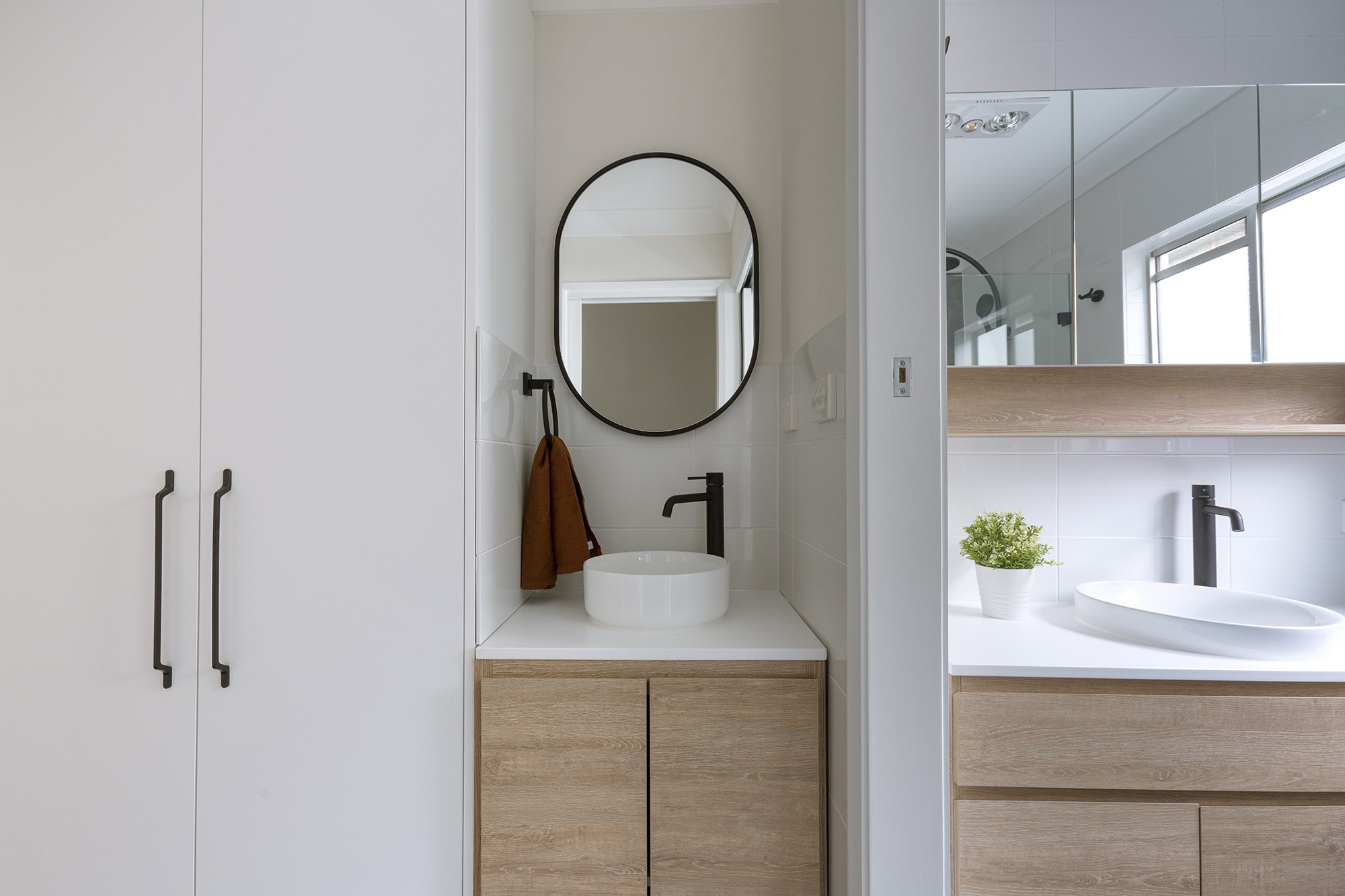 Types of Storage Solutions:
Types of Storage Solutions:


